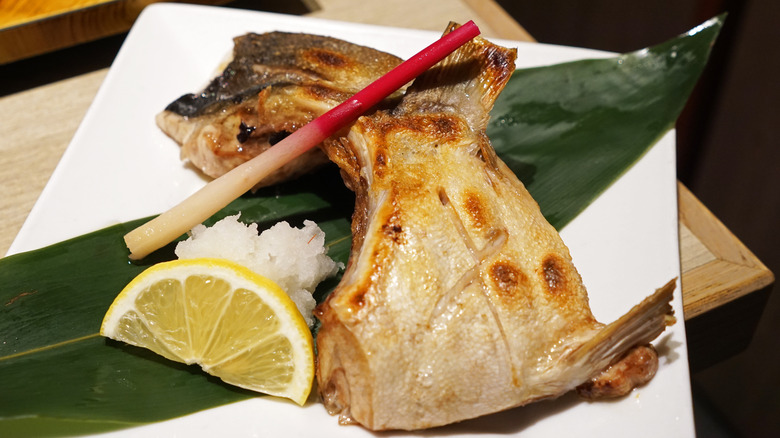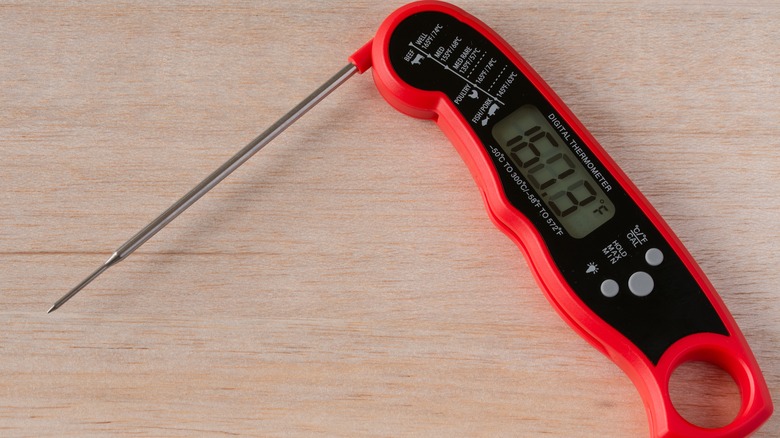The Telltale Signs That Your Fish Collar Is Done Cooking
Fish collar may be the most underrated cut of fish among American eaters, but that doesn't mean it's less worthy of gracing your dinner plates. In fact, this bone-in meat rivals its more popular boneless counterpart, the fish filet, when it comes to flavor and succulence. And for novice cooks and experts alike, the best part is that it's almost impossible to overcook it. Reason being: the close proximity to a bone (the clavicle of the fish) and the fat cap on the belly side of the meat makes it extremely juicy and hard to dry out.
However, that's not an excuse to serve fish collar that's overdone. It's still necessary to know when your dish is cooked and ready to eat. The secret is recognizing the telltale signs of fish doneness. First, look for a color change. Raw fish — whether it's a filet, steak, or collar — usually has a translucent, shiny appearance of the flesh. Once cooked, this changes to opaque.
Another cue to watch out for is the change in texture. While raw fish meat is usually soft and sleek, the cooked version is firm to the touch and flakes easily. You can do the fork test where you stick the tines of a fork into the thickest part of the meat and twist it. If the meat is done cooking, there should be no resistance when piercing and the flesh should separate easily upon turning the fork.
Most accurate sign your fish is cooked
Visual and textural changes are not the only markers that signal your fish collar is done cooking. The best way to check for doneness that also guarantees food safety involves using a thermometer. If you have either of the two thermometers Alton Brown recommends for every home cook, simply insert it into the thickest part of the meat, and the temperature should be 145 degrees Fahrenheit before you can declare it done. The biggest advantage of checking internal temperature as a marker for doneness is the precision. It also provides peace of mind in case you're worried your fish cooking skills are wanting.
Once you've confirmed your fish collar is cooked, any more time on the stove is extra and depends on your preference. For example, you may be gunning for a dark golden brown hue for your deep-fry or a bit more charring for the grilled version. And if you've added the collar to a pot of stew, you may continue cooking for a few more minutes to reach your desired thickness.

